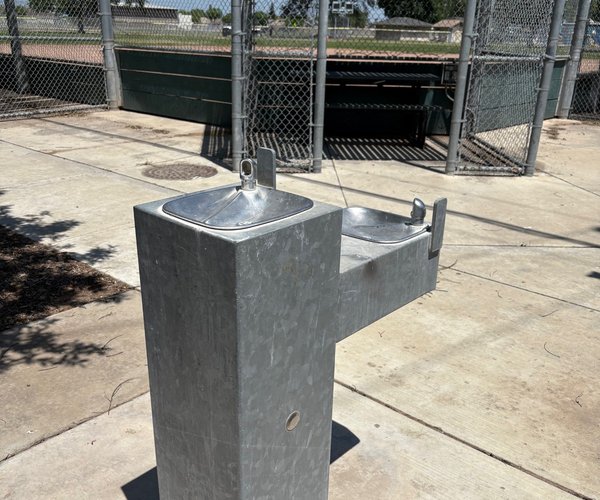America is all about green energy, or are we?
Some 35 miles to the southwest of Manteca could be the key to the world’s future energy supply.
A power source with no greenhouse gas emissions.
And it could be a limitless source of power unlike fossil fuels that sooner or later will be depleted.
Yet, Congress is a going the bare minimum to advance it.
“It” is nuclear fusion.
The United States fusion budget is $790 million for fiscal year 2024.
It represents a 4 percent increase over 2023, which doesn’t even cover inflation let alone underwrite innovation.
Meanwhile, China is treating fusion as a national priority.
They are spending twice as much as the United States.
They are also working around the clock.
And they are nearing completion of a 100-acre magnetic-fusion research and technology campus that broke ground in 2018.
The Biden administration two years ago set a goal to achieve a way to harness nuclear fusion — a process that mimics the sun — to generate a reliable and clean source of electricity.
The key to the world’s future energy supply is in its infancy stage at Lawrence Livermore National Lab where 25 percent of its 10,000 member workforce resides in the Northern San Joaquin Valley.
It is there on Dec. 5, 2023 when arguably the most stunning technology breakthrough so far this century occurred.
Researchers were able to generate more energy than it took to achieve nuclear fusion.
It happened at the lab’s National Ignition Facility.
Researchers chip away three billionths of a second at a time in their bid to unlock the potential of nuclear fusion to lay the groundwork for clean electricity.
It isn’t the primary mission of the elaborate laser.
The No. 1 reason it exists is to keep the nation’s stockpile of nuclear weapons safe.
That said, building on a breakthrough where nuclear fusion generated more energy than was consumed to power it has significant global consequences.
The ramifications for both reducing greenhouse gas emissions and producing what could be an unlimited source of energy are transformative
Producing current annual energy needs of San Francisco, a city of 808,000, requires using the equivalent of:
*200,000 train car loads of coal or
*six to seven oil tankers of fossil fuel.
But to meet the energy needs of a city the size of San Francisco, nuclear fusion requires just two 55 gallon drums of material.
And the material doesn’t create pollution.
The national ignition facility exists first and foremost to assure the United States has good stewardship of its nuclear stockpile.
Since the end of nuclear weapon testing either underground or in remote locations in the Pacific Ocean, science replicating the elements and conditions in the warheads have been used to make sure they stay safe and stable.
The mission also is to get a better understanding of matter.
The third mission is exploring the development of fusion energy.
Given how we are reminded day in and day out the need to replace coal and fossil fuels to save the planet, you’d think those in Congress parroting the line would at least match China’s commitment to working toward establishing nuclear fusion as a power source.
Switching to the 100 percent use of electric vehicles would only put a small dent in the emission of greenhouse gases.
Being able to replace fossil fuels with nuclear fusion to create electricity would obliterate 74 percent of this nation’s greenhouse gas emissions.
That’s based on data compiled by the United States Energy Information Administration.
The savings worldwide would be even greater.
Based on that alone, and the level of threat to civilization that greenhouse gas emissions are described as being, you’d think the green movement would demand more resources being put toward developing nuclear fusion as a practical energy source.
It is far superior to wind and sun in terms of reliability.
Since the first time the lasers produced more energy than needed to create fusion, the ignition facility has had four other times where “shots” have exceeded the break-even mark with each one producing more energy.
In a typical year, the lasers can be used to produce 400 shots.
The material with a lead-walled chamber where fusion happens is significantly hotter than the core of the sun during the extreme brief time it occurs.
The time fusion occurs is measured in billionths of a second.
During that brief sliver of an instance, the process consumes the equivalent of the energy that the entire world uses in a year.
It is created through an extensive relay of lasers.
And while that sounds mind-boggling, the extremely brief time the process occurs thanks to the lasers involved means a mere fraction of electricity is used to get things going.
Most projections based on current consumption rates anticipates fossil fuel supplies will be depleted by the end of the century.
At the same time, renewables such as solar and wind are highly unlikely to be able to meet current demand let along growing demand as the years unfold.
It is why there is a high degree of private sector interest in the fusion technology to the point private entities are spending billions of dollars on research.
The ignition facility shares its results and data with the private sector in its bid to come up with a new energy source for the world.
Besides not being carbon based which means the process is clean, it is safe given there is no threat from earthquakes and such to trigger a disaster.
Scientists on Dec. 5, 2023 performed a NIF shot as they always do — firing the facility’s 192 powerful lasers onto a BB-sized target of deuterium and tritium (DT), heavier isotopes of hydrogen.
However, in the Dec. 5 experiment, the laser energy was upped to 2.05 MJ, and conditions of implosion symmetry, heat and compression were just right, generating the record-breaking energy output of 3.15 MJ.
If climate change is as big as a threat to the United States and the world as many in Congress contend, then nuclear fusion needs to be treated with the urgency that the Manhattan Project was to develop the atomic bomb.
And that requires investing the money to make it happen.
To contact Dennis Wyatt, email dwyatt@mantecabulletin.com






